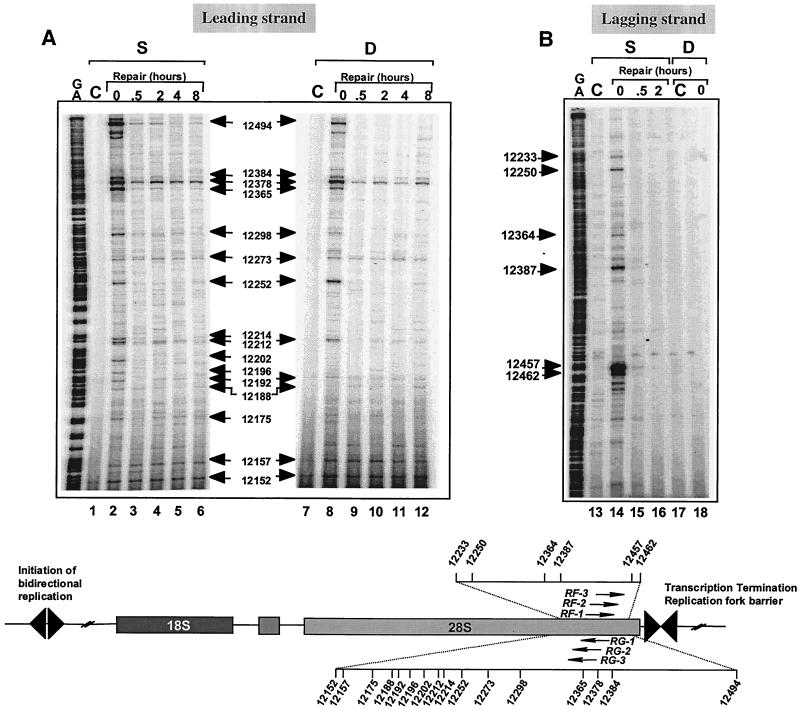FIG. 7.
Top1 cleavage complexes occur on both strands of the human 28S rRNA gene, whereas replication-mediated DNA double-strand breaks are detectable only on the leading strand. The scheme at the bottom illustrates the positions of the primers used with the landmarks of the rRNA gene. Experiments were performed with primer set RF for the leading DNA strand (panel A) and primer set RG for the lagging strand (Table 1) (panel B). HT29 cells were treated with CPT for 4 h. DNA was extracted immediately after drug treatment at time 0 (lanes 2, 8, 14, and 18) or at the indicated times after CPT removal. Time in drug-free medium is indicated above lanes 3 to 6, 9 to 12, 15, and 16. Lanes C, control (untreated) cells; lanes S, detection of DNA single-strand breaks; lanes D, detection of double-strand breaks; lanes G+A, Maxam-Gilbert sequencing reactions. Numbers correspond to genomic positions of the DNA lesions (GenBank accession no. U13369).

